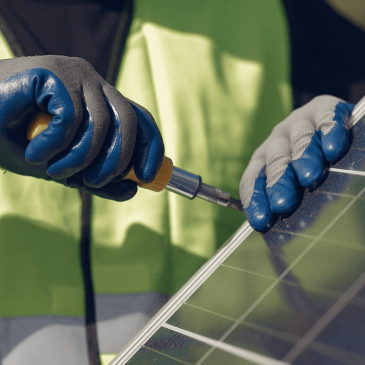The Cost of Going Solar: What You Should Be Paying
A lot of things can affect the cost of having a solar power system installed in your home. From the type of solar panels and energy converting equipment you choose to your contractor’s labor costs to any additional work that might be required to make your home solar ready, there’s no shortage of cost-affecting factors you’ll have to consider when going solar in 2023 or beyond.
But having said that, it is important to know what the averages are, so you can make the most informed decision about your installation. For example, if your contractor provides you with a quote that far exceeds the average cost, then by having this understanding, you can ask them and find out why their quote is so high.
What’s the Average Cost of Solar in 2023?
In 2023, the average cost of a solar panel installation ranges from $17,430 for low-end equipment to $23,870 for high-end equipment, resulting in an overall average cost of $20,650. It is important to note that these are the average prices after the federal solar tax credit is taken into account. Based on a cost per watt ($/W) basis, solar panel prices in 2023 average $2.95/W before any manufacturer, state, or federal incentives.
What Affects the Cost of Solar?
Solar is a unique product in that no two installations are the same, so price quotes tend to be different between projects. Ultimately, the price you pay depends on your home and property, your unique situation, your contractor’s labor costs, your historical electricity use, and a host of other factors, some of which can include the following:
- System size: Simply put, a larger solar panel system costs more than a smaller one. However, you might be surprised to learn that the average per-unit price for solar decreases when you increase your system’s size.
- Battery storage: If you want to access energy from your solar system at night, then you will need battery storage. Like solar panels, solar batteries come in a wide range of styles and prices, and depending on your evening energy demand, they can account for a sizable portion of your installation.
- Location: The price of solar can vary wildly by state, and even per city in many cases.
- Equipment brand and quality: Like all products, solar hardware can come from a wide range of brands, with some more reputable than others. There are brands that specialize in affordable equipment and others that are known to produce higher quality, but also more expensive, models.
- Panel type: The most common types of solar panels used in residential installations are monocrystalline, polycrystalline, or thin-film. Each comes with their own pros and cons, as well as price range. With solar panels, you will pay a higher price for better quality.
- Roof characteristics: Your roof characteristics can also impact your installation cost because solar contractors typically charge more for installations that are difficult or complex. Plus, older roofs may also need to have additional support structures installed in the attic to ensure they can bear the extra added weight safely.
- Permits: Every township has its own permit requirements for solar installations, and permits usually have fees. While your permit costs won’t be a huge factor in your overall cost, it does need to be factored in.
- Connection to the grid: Your local utility company will charge you an interconnection fee for connecting your solar system to the grid. This is another fee that isn’t necessarily large, but it does increase your total out-of-pocket costs.
How to Make Solar More Affordable
Solar’s cost is understandably something that homeowners need to contend with, so it’s not uncommon for some to seek ways to make their solar installations more affordable. Luckily, there are a few things you can do to help make your system easier on your bank account.
First, you can choose to finance your solar system instead of paying for it in full in cash. Financing your solar installation does mean that you will wind up paying interest, so it will be more expensive over the long run, but by financing you will be able to make smaller monthly payments and this can help make solar more affordable to you right now.
Another way to lower your solar installation cost is to start off with a smaller system. You will still be able to enjoy lower energy bills and your total cost won’t be as high. Plus, you can always add on to your system as your finances allow.
Lastly, you can opt for solar panels and related equipment that aren’t top of the line. Mid-range solar panels will provide you with excellent quality and performance but without the premium price tag. Just remember to read customer reviews about the products you’re considering, so you don’t accidentally choose equipment with known issues.

